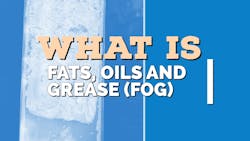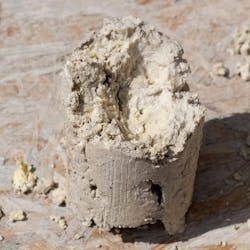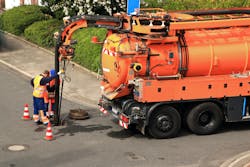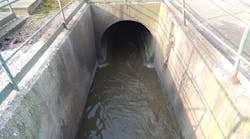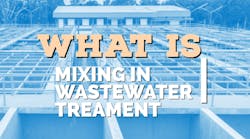FOG is an acronym for fats, oils and grease, particularly in the context of wastewater collection systems. These fats, oils and grease are derived from vegetables or plants, and are composed of fatty acids and glycerols.
Fats, oils and grease pose a frequent and costly challenge for sewer systems because they cause blockages and corrode pipes.
How do fats, oils and grease affect the sewer system?
The most notable effect of fats, oils and grease on a sewer system is in causing blockages.
FOG solidifies in sewer pipes and, over time, accumulates into a large mass sometimes referred to as a “fatburg.” This accumulation forms a major blockage in the sewer.
The buildup of FOG can cause sewer overflows, sewer pipe corrosion and odor issues. FOG can also accumulate in other parts of a wastewater system, such as lift stations.
Maintenance crews must frequently inspect the efficacy and condition of sewer lines. FOG is a major contributor to the frequency and cost of this maintenance.
Why are fats, oils and grease a common problem?
Fats, oils and grease are a common problem due to inappropriate disposal by a sewershed’s restaurants, industrial facilities and homes.
According to the U.S. EPA in 2012, 47% of reported sewer system blockages were caused by grease from restaurants, homes and industrial sources. A single restaurant can release 800 to 17,000 pounds of grease into the sewer system each year.
Many municipalities have regulations in place to limit the entry of FOG in a sewer system. For example, the National Pretreatment Program requires a publicly-owned treatment works to enforce specific limits for industrial users. Many communities exercise requirements for the use of grease traps to prevent FOG from entering a collection system. The Code of Federal Regulations prohibits users from introducing solid or viscous pollutants, such as FOG, to a publicly-owned treatment works.
However, an area’s restaurants, business and homes will likely continue to contribute some quantity of FOG even with these limits. Many homeowners and food service staff are not educated on the costs of pouring grease down a drain. Other community members may have little interest in a sewer system’s health.
Local ordinances, facility inspections and community education initiatives all help to minimize the buildup of FOG in a sewer system.
How do fats, oils and grease affect the environment?
FOG buildup interferes with a sewer system’s ability to effectively convey wastewater to the treatment facility.
FOG forms blockages in a sewer, leading to backups and overflows. The weak acidity of FOG accumulation also corrodes pipes. This makes FOG buildup a contributor to untreated wastewater discharges.
An untreated wastewater discharge brings a significant danger to public health, damage to local ecosystems, nuisance odors and degradation of water quality.
Untreated wastewater endangers public health primarily through the exposure of disease-causing pathogens and toxic pollutants. Pathogens and toxins also cause environmental harm, but a local ecosystem can suffer from the excessive nutrient pollution that untreated wastewater brings as well. The nuisance odor of untreated wastewater can lead to community complaints and discontent.
What do fats, oils and grease do to water quality?
When FOG blockages and corrosion contribute to a discharge of untreated wastewater, the pathogens, toxins, nutrients and other pollutants can quickly affect local water quality.
Once untreated wastewater is discharged, its pollutants can reach areas across the watershed. Direct contact with affected waters can be a direct danger to public and environmental health. These pollutants can also affect the water quality of drinking water reservoirs, often requiring expensive advanced treatment or remediation.
The discharge of regulated pollutants also affects a wastewater system’s compliance with effluent guidelines. Exceeding these effluent guidelines will lead to regulatory intervention.
